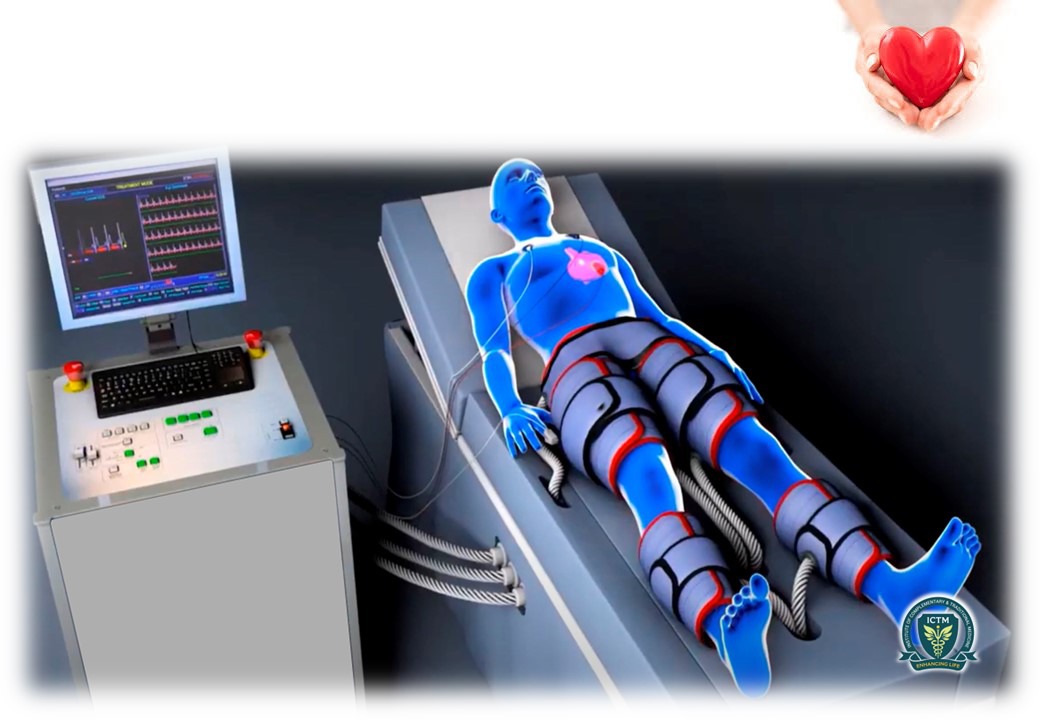Is Aromatherapy combined with Traditional Chinese Medicine a good match?
Secretary-General ICTMNutritional & Functional Medicine

Secretary-General
ICTM
Nutritional
& Functional Medicine Practitioner, DSY Wellness & Longevity Center
McMed
(NM), F’Ship Anti-Aging Metabolic & Functional Medicine (A4M, USA)
EECP and its
potential benefits for heart disease - Part1
Malaysia is a
blessed country with delicious delicacies and cuisine. A typical Malaysian
diet, consisting of tasty sauce and meat, is primarily high in fat, cholesterol
and refined sugar. This lifestyle may pose a risk to various chronic diseases,
especially cardiovascular diseases. According to data, cardiovascular disease
has been a national burden in Malaysia. It tops the morbidity and mortality of
Malaysians throughout decades, and the rates continue to rise. A lot of people
suffer from cardiac discomfort for a long time. They are often at a loss,
especially when surgical procedures and drugs cannot play much help to their
terrible chest discomfort. However, the invention and introduction of Enhanced
External Counter Pulsation (EECP) to Malaysia may bring a glimmer of hope to
address their sufferings.
So, what is
Enhanced External Counter Pulsation Therapy? And how does it work?
Enhanced External
Counter Pulsation (EECP) is a non-invasive treatment approved by the FDA and
the Ministry of Health Malaysia. It consists of three pairs of external
inflatable cuffs applied around the calves, the thighs and the buttocks. It
applied positive pressure to these areas with specific timings to synchronise
with the patient's cardiac cycle.
When the early
diastole phase of the heart starts, the airbags will inflate and exert pressure
on the lower body, increasing the blood flow back to the aorta and the aorta
pressure. Also, through the force of the lower body, venous return increases
and increases cardiac output. Before the diastole phase ends, the airbags will
deflate, and pressure exerted on the lower limbs will quickly release. The
aorta can eject blood to the lower body more easily.
Potential
benefits for heart disease and why it might help:
It improves
coronary artery disease
Coronary artery
disease (CAD) is a condition involving the narrowing or blockage of coronary
arteries; these arteries transport oxygen-rich blood to cardiac muscle. The
narrowing of arteries normally involves the build-up of the plague, which
limits the blood flow. You can imagine blood flow as the traffic while the
blood vessels as the traffic lane; when there is some damage to the route or
roadblock there, this will affect the traffic and become slower. The patient
may have little or no symptom unless the plague triggers a blood clot and cause
a total blockage to the arteries, oxygen-rich blood may be unable to reach the
heart, and the cardiac muscle may damage. Some symptoms should be alert of
include temporary chest pain or discomfort, especially during physical activity
or emotional distress, shortness of breath, dizziness, and heart palpitation.
Why might it
help?
Through pressures
on the lower body, the study showed EECP can promote the growth of the coronary
artery collateral branches and improve peripheral blood circulation. EECP can
help to meet the demand for oxygen in cardiac muscle by improving coronary and
peripheral blood flow. Another study also showed that EECP helps blood
circulation by promoting endothelial function in peripheral arteries and
decreasing arterial stiffness. So, the patients can improve exercise tolerance
after sessions of EECP therapy.
It improves
angina pectoris:
Angina pectoris
is a type of chest pain or discomfort. The patient often describes this pain as
somebody squeezing their heart, which causes high pressure and tightness and
even pain in the chest. Angina pectoris often exacerbated with exposure to cold
and emotional distress, and the severity of pain cannot be relieved by respiration,
cough or posture. It can be a symptom of coronary artery disease or spasms of
arteries.
Why might it
help?
In a study
involving angina pectoris patients who are unsuitable for invasive surgery
procedures, completing total sessions of EECP therapy, at least 80% of patients
improve at least one angina class. And also, the occurrence of episodes of
angina decrease, hence improving the patient's quality of life. On the other
hand, the concomitant drug use (nitro-glycerine) also decreases. Another good
news is fewer patients will have to undergo revascularisation after completing
sessions of EECP therapy. Scientists explain the benefits of EECP intervention
may involve the improvement of blood flow in limb arteries, the increasing
level of the vasodilator (nitric oxide and PGF1), and regulating blood vessels'
homeostasis.
It helps with
heart failure (HF) ?
Types of heart
failure can be classified by causes and functional status. Treatment options
for patients with HF are similar to other heart diseases, including lifestyle
modification, medications, cardiac surgery, and additional implantable
pacemaker and defibrillators to prevent sudden heart attacks. Although the
advancement of medical technology and drug intervention, patients still experience
the symptoms and signs of heart failure, which implicates their daily lives.
Patients with congestive heart failure are the most studied group that may
benefit from undergoing EECP therapy.
Why might it
help?
Patients with
heart failure are a high-risk group for developing pulmonary emboli. The
intervention of EECP increases cardiac output, and venous pressure is hence
decreased through intermittent compression to the vein of lower limbs.
Therefore, the risk of developing deep venous thrombosis and pulmonary emboli
decreases.
Takeaways
EECP has brought
many advantages to the patient, but it cannot never substitute drugs and
surgery. No matter how advanced the treatment and the benefits, it still has
risks and may not be suitable for everyone. Therefore, if you are interested or
have questions regarding EECP therapy, please find your nearest healthcare
provider or contact us (secretary@ictm.com).
Please join us on
the journey of a happy and healthy lifestyle. The Institute of Complementary
Medicine and Traditional Medicine would be delighted to accompany you.